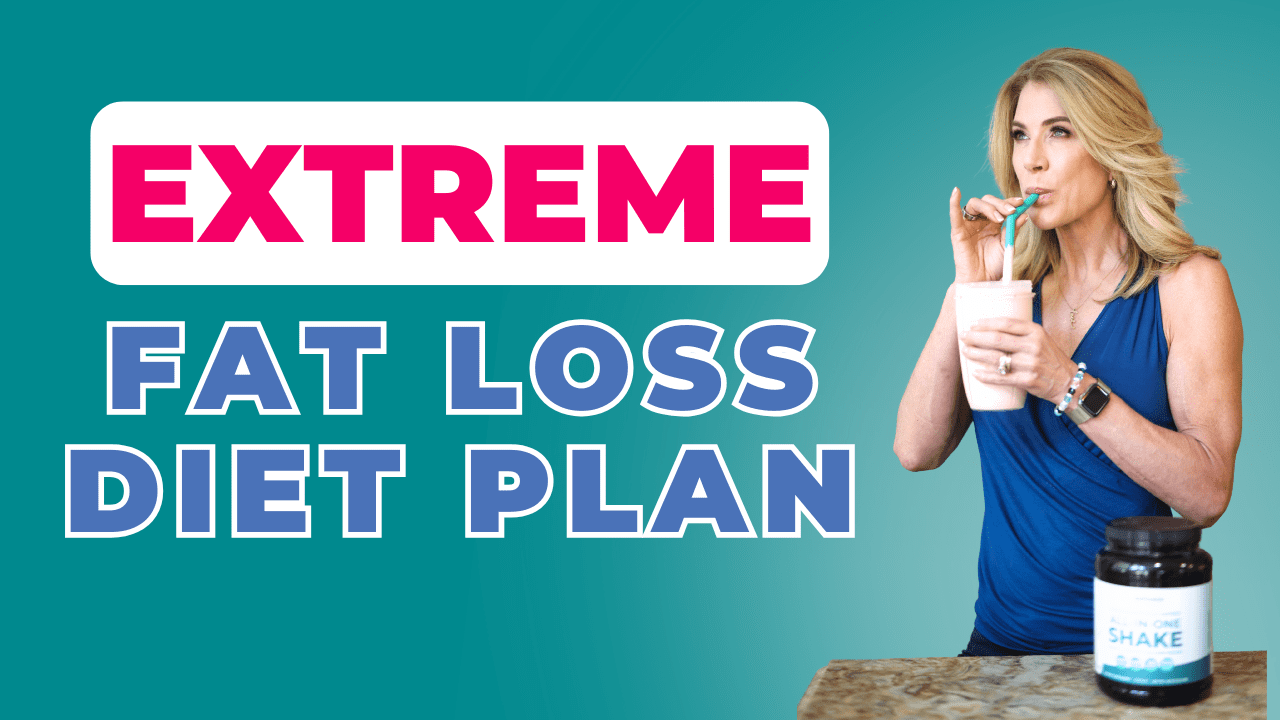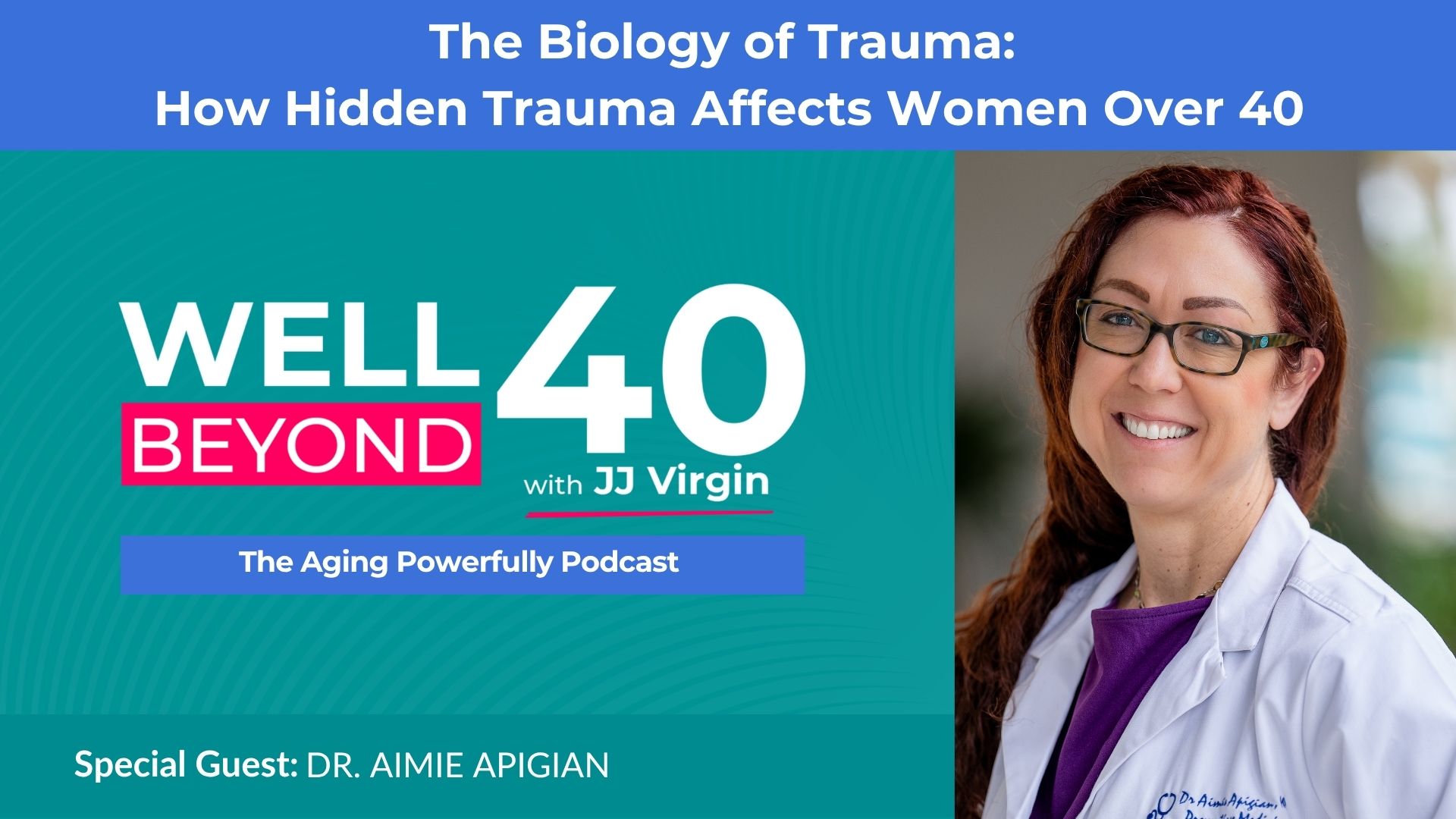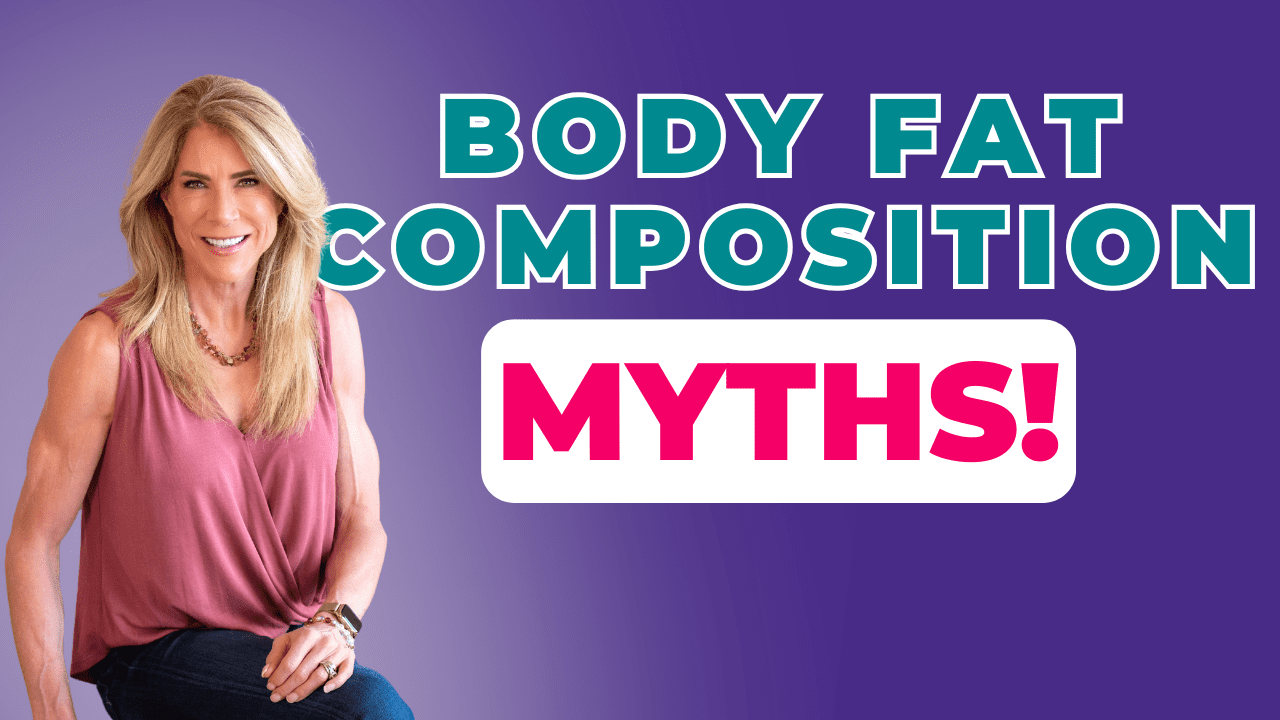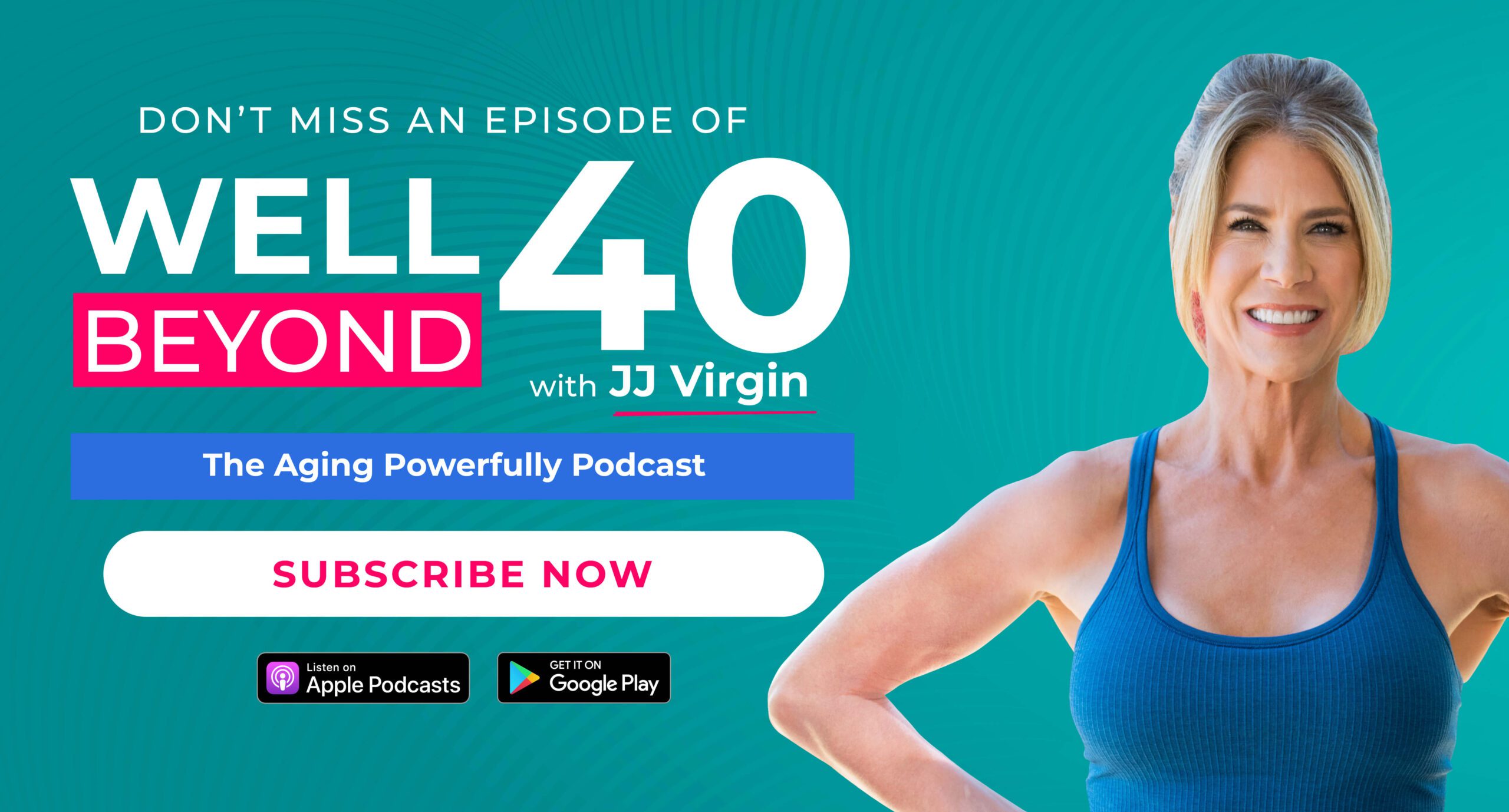Lose Weight & Feel Better By Optimizing Your Blood Sugar
Optimizing your blood sugar is the #1 thing you can do to get healthy. In this episode, JJ shows why a continuous glucose monitor (CGM) can help you see patterns in your blood sugar levels so you can optimize weight loss, overall health, and more. Tune in to learn how to use a CGM, the surprising truth about how much glucose your body needs, why snacking (even healthy snacks!) keeps your blood sugar and insulin high, how insulin can help or hurt you, and simple ways to help manage prediabetes or insulin resistance. Plus, you’ll discover the best way to know whether you have high blood sugar, the best thing you can do to manage your blood sugar, what your blood sugar tells you (and the ideal numbers you should aim for), the critical red flag for diabetes, how to satisfy your sweet tooth without skyrocketing your blood sugar, and how to optimize sleep and stress to help manage blood sugar.
Mentioned in this episode:
Watch the FULL VIDEO on JJ’s Youtube Channel
Order a continuous glucose monitor to track your blood sugar levels
Watch this video to learn 5 tips for blood sugar control
Track your sleep and more with an Oura Ring
Track your sleep and more with Fitbit®
Learn more about Garmin® to track sleep and more
Learn how to build the perfect plate
Get consistently great sleep with my Best Rest Sleep Cheat Sheet
Fall and stay asleep safely with Sleep Candy™
Listen to learn how to effectively manage stress levels
Get a blood sugar-balancing workout in just 8 minutes
Satisfy your sweet tooth without guilt with our FREE Sweet Treats Guide
ATHE_Transcript_Ep 506_How to Use a CGM for Health Intel
JJ Virgin: [00:00:00] Hey, this is JJ Virgin. Thanks so much for joining me. This is Ask the Health Expert. In each episode, I put the Power of Health in your hands and share ways to get healthy, lose weight, heal your gut detox, and lots more. So you can look and feel better fast. If you’d rather watch the video. Hey, I did put on my makeup and do my hair, so check it out on my YouTube channel.
If you wanna really take charge of your own health, get a wearable or a couple, they’re game changers. You don’t have to wait for days for your doctor to read lab. You can get great intel in real time about your heart rate, blood pressure, sleep, and even your blood sugar. Now, that last one is a little controversial, but I don’t think it should [00:01:00] be, and I’m gonna tell you why.
Hey, it’s JJ Wearables like. Apple watches, Fitbits, Oura rings are all awesome ways to track your health and so are continuous glucose monitors. CGMs, they’ve been literal life savers for people with diabetes and some people think that diabetics are the only people who should use them, but I totally disagree.
They can be a really amazing tool for weight loss and improving your overall health because let’s face it, optimizing your blood sugar is the number one thing you can do to get and stay healthy. Do that, and pretty much everything else takes care of itself. So first, let me tell you what they are and what they can do.
When you think of glucose monitors, you probably think of those finger prick tests. You know, when you put a little drop of blood onto a test strip and you stick it into a reader and then tells your blood sugar level, I mean, how fun is that? Seriously? But a CGM stays on your body and gives you [00:02:00] way more data.
And you can download it, your computer or phone to see patterns in your sugar levels. Now I’ve been using the Nutrasense CGM with an app and I totally love it. You can get yours at jjvirgin.com/nutrasense, so check that out and see what you think about it. And I’m gonna link to it below too. So let me tell you about these CGMs.
So a CGM records your blood sugar levels all day every day, so it can help you spot trends. If you have diabetes, it can give you and your doctor the bigger picture to help you manage it. Since it’s constantly recording, it can show you if your sugar goes dangerously low overnight, which most people would never know about.
A CGM can also track high blood sugar levels between. Early morning blood sugar spikes. It can show you how diet and exercise affect you and let you know if your treatment plan is really working or if something needs to be adjusted. With the cgm, there’s a little tiny sensor that goes underneath your skin.
It’s [00:03:00] usually right here on the back of your arm. Now this then sends your glucose reading to an. Again, it tracks your levels 24 7, so you can see how it changes over a few hours or over a few days. So in real time you can figure out which foods work for you and which foods don’t. Everybody knows we need glucose to survive.
It’s literally a key fuel for us. But here’s what’s surprising. We only have about a teaspoon of glucose circulating in our bloodstream, and of course, blood sugar goes up when you eat. That amount depends on how balanced your meal is. A high carb meal sends your blood sugar into orbit, but if you eat by the plate and you focus on protein first, then the fiber from non-starchy veggies and then anti-inflammatory fats, your sugar stays way more stable and rises more slowly.
Comes down more quickly. And you want that because when your blood sugar goes up, your body releases the hormone insulin [00:04:00] to move it outta your bloodstream and into your cells for fuel and storage. But here’s the thing, blood sugar moves fast and insulin moves slow. So if you’re eating a high carbon, high sugar impact diet, or if you’re a snacker, both your blood sugar and your insulin can stay.
When you’re eating a high cfiber from non-starchy veggies andbody with sugar, you can cause a big rise in your blood sugar. This then puts a big demand on your pancreas to release insulin to get that blood sugar back down. Do this over and over and over again, and your insulin receptors start to get fatigued.
They literally can’t hear insulin’s message, so your body has to produce more. And the insulin isn’t having the effect it should, and your blood sugar levels end up higher than they should. Then your pancreas can’t keep up with the demand for higher insulin, and that eventually becomes insulin resistance.
That means your cells resist or they can’t hear insulin’s message, so no [00:05:00] sugars can be stored there, and that keeps both your blood sugar and your insulin elevated. If your body can’t keep the insulin a level up. Next thing you do is end up with full blown diabetes. So if your waistline is growing and you can’t figure out why insulin resistance may be the cause, because insulin literally locks the doors on weight loss by triggering fat storing enzyme and decreasing fat burning enzymes.
So losing weight is almost impossible. Now, obviously chronic high blood sugar paves away for diabetes and heart disease too, and it can also damage your thyroid, throw your metabolism out of whack, trigger cravings, and just make you feel moody, tired, miserable. But here’s the good news. If you’ve got prediabetes or insulin resistance, they can be reversed with some pretty simple diet, lifestyle changes.
So first, how do you know if you have high blood sugar? Well, there are some symptoms like fatigue, especially [00:06:00] after you eat cravings for sweets, brain fog, and stubborn belly fat. Those are the big clues, but the best way to really know it is to measure it. Starting with this one, a fasting blood sugar level of 100 to 120 mgs per DL is considered prediabetic.
So the number one thing you can do to manage your blood sugar is to use a CGM to manage and measure your glucose levels, cuz what you measure, you can improve. You’re not relying on vague symptoms and doing a lot of guesswork. A CGM lets you see in real time how food impacts you and which foods you might need to swap.
Seeing glucose levels in real time can help you make better decisions about your food, about your activity, and even your medications. So when you monitor your blood sugar throughout the day, this is what you’re gonna wanna work towards. You wake up your morning fasted blood sugar is 70 to 85 mgs per dl.[00:07:00]
Then it should go up, say 20 to 30 mgs per dl, about 30 minutes after eating, and then come back down to fasting levels. Within two hours, you will definitely not want your morning fasting glucose to be over 100 again. That gets you into that prediabetes insulin resistance range, and you wanna pay attention to those post prandial numbers.
That’s after you eat to see how your meals are impacting. Now, blood sugar levels may fluctuate after fasting for long periods of time or an hour or two after you eat, but the fluctuations are minor, which means normal blood sugar levels stay within a really narrow range. And for most people, that range is usually about 80 to 110 mgs per deal, and normal levels sit at about 90 mgs per DL.
That is sort of that range. Now, after you eat a full. Normal blood sugar levels might go up to even one 40 mgs per dl, but if blood sugar levels don’t come back several hours [00:08:00] after you. That should get your attention, and it could be a red flag for diabetes. Now, this is really eye opening intel because most times if you’re a late night eater or a snacker, it seems pretty harmless.
You’re not punished with an instant lightning bolt or anything, right? And usually weight gain is the only thing. You see it first. So you might even think you’re getting away with it. You have no real way of knowing how much you’re negatively impacting your blood sugar until you measure and track it, and late night snackers tend to have higher fasting blood sugar in the morning, which you also wouldn’t know if you weren’t tracking.
But when you see on your app that your blood sugar is rising or falling fast, it’s like, holy cow. But it’s good news too, because you can figure out the best way to get your sugar back to normal right then and there. Now some CGMs even have alarm settings that alert you if your blood sugar is out of range and you can know other people or your doctor get the alarm too.
So that’s kind of. [00:09:00] A CGM can help you get to the goal line faster, and once you have your blood sugar stable, you’ll be able to use stored fuel to keep your weight under control. That means fat and reduce your risk of diabetes. You’ll also have better energy, better workouts, and better sleep. Now if you’ve got a sweet tooth, You’ve got that battle going on.
Don’t worry. You can still have an occasional treat, but make it low sugar impact. That means you can satisfy the craving without really doing any harm. And I’ve got recipes for you for this by the way. I’ve got recipes for brownies and cookie bites and freezer fudge, and lots more that are all low sugar impact.
Just check out my Sweet Treats guide. I’m gonna put the link below and it’s free All. Let me quickly run through a couple of other ways to support your blood sugar, and if you’re measuring, you’ll be able to see the difference these make in real time. Number two, balance your meals. You already know that you have to ditch the cookies, the [00:10:00] soda, the high sugar impact foods, right?
You’re gonna wanna swap those foods out for lower sugar impact foods and build your meals by the plate. What does that mean? You’re gonna start with clean, lean protein, then add in some non-starchy vegetables. Then some healthy fats, and then maybe a little high fiber, slow low carbs. Now making that one change by eating by the plate and adding protein and veggies first is gonna mean blood sugar is gonna enter your bloodstream slowly instead of going phew, like a river.
Okay, number three, reduce your stress. And no, that wasn’t supposed to make you laugh. I mean, you actually need to do this and you can do this, and here’s why it’s so important. When you’re stressed, your adrenals release more of the stress hormone cortisol. Guess what that does? That causes your blood sugar to go up.
So then insulin goes up. And guess what? You win when that happens. You win belly fat. [00:11:00] No one wants that, right? If you’re chronically under stress, your adrenals eventually get wiped out, then you’re tired all the time, which of course makes you crave sugar for energy. Now, I give lots of tips to reduce your stress in my video, on what to eat, when to eat, and why for stress and anxiety.
So check that out for some really good information. All right, number. Get your sleep because when you’re exhausted, it’s even harder to bounce your blood sugar and lose weight. You should be getting at least seven to nine hours of solid, uninterrupted sleep every night. Now, according to a 2010 study in the Journal of Clinical Endocrinology and Metabolism, just one night without enough sleep can trigger insulin resistance.
And as you now know, Insulin resistance is linked to type two diabetes. It can also make you hungrier, so that’s not helpful because we know when you’re hungrier, you’re probably not craving salmon and Brussels sprouts, right? So you might wanna try my sleep [00:12:00] candy to help here. It’s melatonin and other calming nutrients.
It’s literally what I use every single night to get a great nights sleep. And this, by the way, is where another wearable can really help like the aura ring, because it’s gonna let you see in real time what’s working. And by the way, you wear an aura ring and eat a late night meal, and it will tell you about it in the morning.
You will see how quickly that impacts not only your fasting blood sugar, but also your sleep. All right, next step. You’re gonna wanna move more. Course exercise can get you an endorphin boost, so then you don’t need to go reach for it from the cookie jar. Right? But it’s also amazing for your blood sugar in a couple of different ways.
One, When you walk after a meal, it can quickly lower your blood sugar response to that meal. And then two, resistance training, lifting weights, body weight can help improve insulin sensitivity. And of course, if you’re putting on more muscle from that resistance training, you’re gonna rev up your metabolism [00:13:00] as well.
A study in the Journal of Applied Physiology showed that the right exercise, like burst training, can improve blood sugar levels and reduce complications for people who already have diabetes. So this is a great tool for you to use wherever you are in the spectrum. So thank you so much for joining me, and for those of you who don’t know me, I’m JJ Virgin.
I’m a four times New York Times bestselling author and a fitness hall of famer, and I have lots more I can share with you to help you get your blood sugar under control, including that. Free sweets treat guide. And by the way, it’s all low sugar impacts, so don’t forget to grab that and also check out and like my other videos on blood sugar control.
I’ll see you next.
For more info on this and other health topics I cover or to rate and review, find me on Instagram, Facebook, and my website jjvirgin.com. And don’t forget to subscribe to my show so you won’t miss a single episode. Go to [00:14:00] subscribetojj.com. Thanks again for being with me this week.

 Subscribe to our show
Subscribe to our show 




